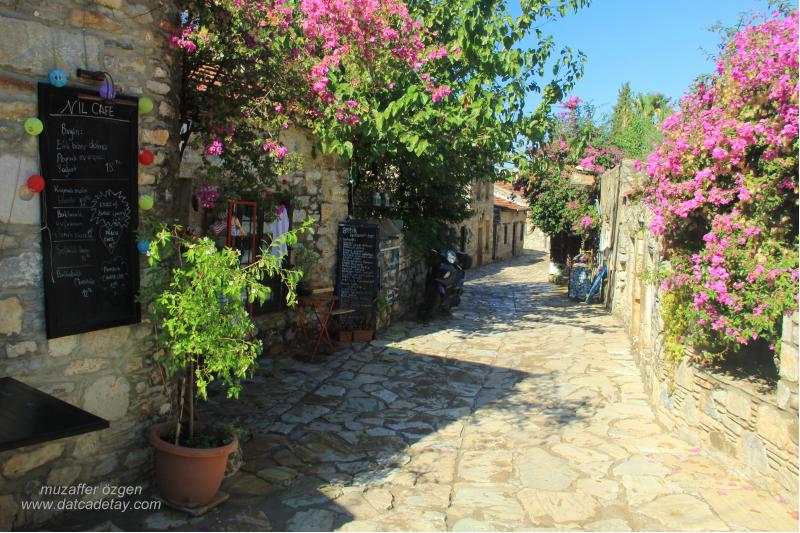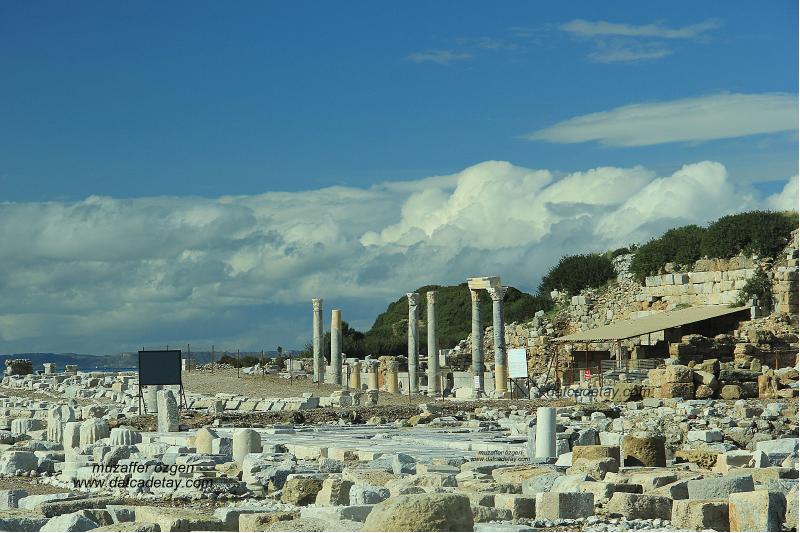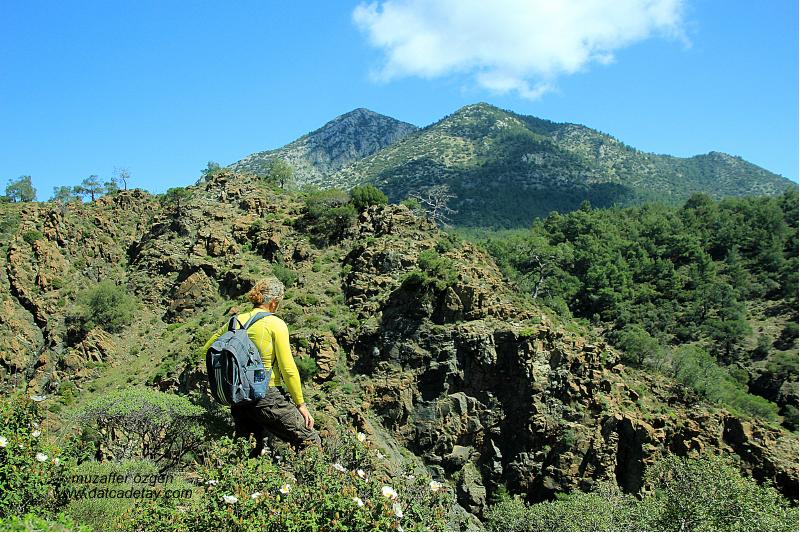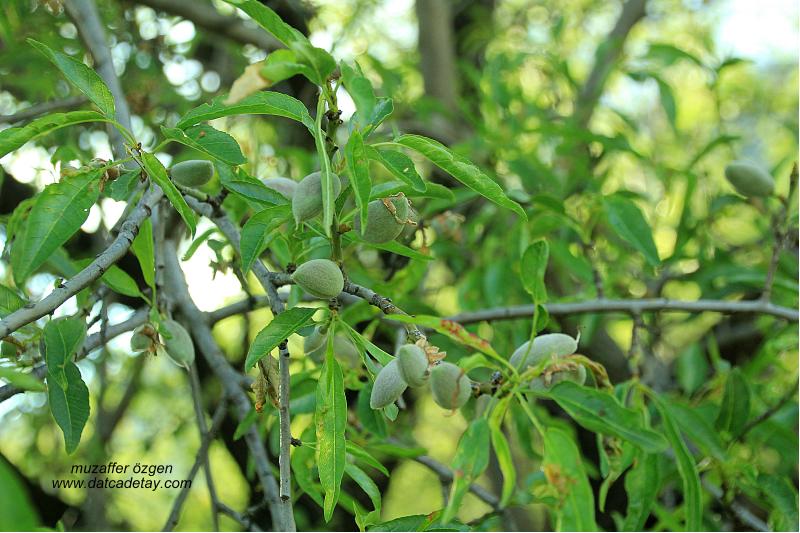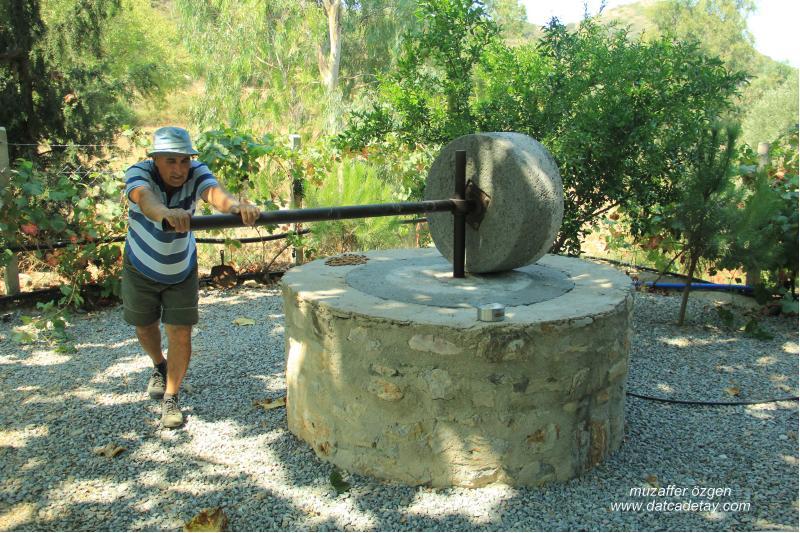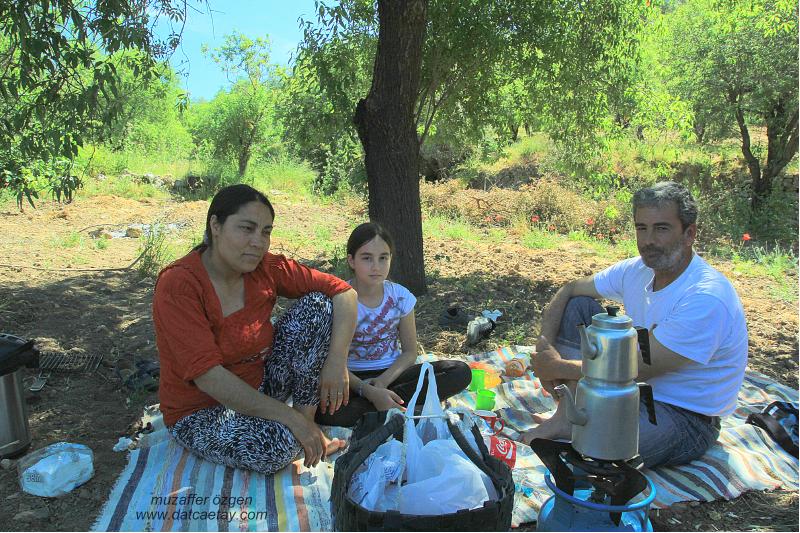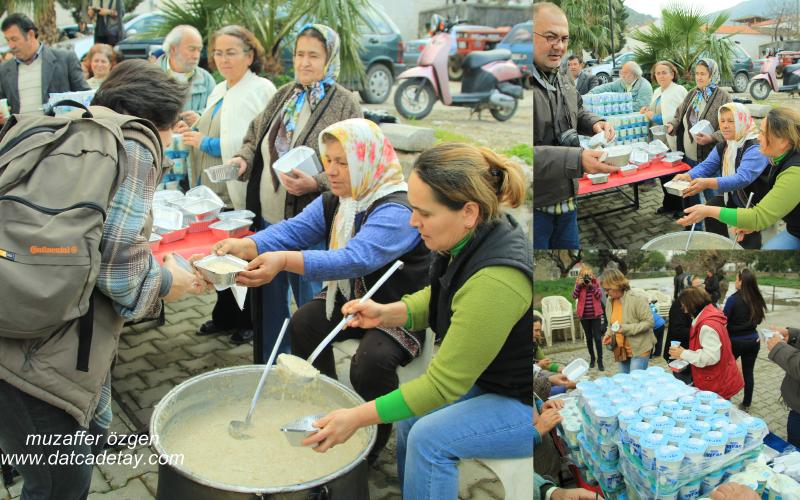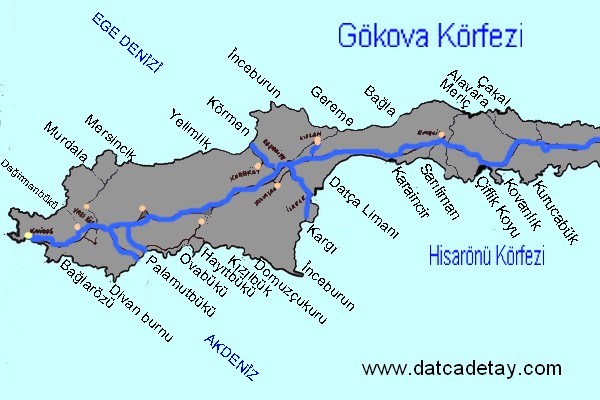Geographically located in the South-West is a town in the Aegean province of Mugla. Datça has 52 big and small coves which have the quality of an aquarium on the coastline of 235 km which connects Mediterranean and Aegean Sea. Datça has beaches with blue flags, you can have holiday with peace of mind. The narrowest part of the peninsula is 1 km and the widest part is 17 km. A typical Mediterranean climate is seen; summers are hot and dry, winters are mild and rainy.summers the wind blowing from the north and from the sea brings cool air to datça.Datca has mountainous and a rugged terrain.It is located on the plains between the mountains and valley as a result, diversity is seen in wildlife. There is Gokova gulf to the north of the peninsula and hisarönü south of one side of the peninsula is Mediterranean and the other side the Aegean Sea, since thousands of years Datça peninsula is a peace island.also today, friendly and lovely people’s of the country.
Climate in Datça
Datça climate which has the typical Mediterranean climate has a long holiday period because of its mild climate. The average temperature during summer months is 32 degrees while the humidity rate is between 35-60%. The cool summer breezes blowing from the north eliminate the suffocating heat and moisture. Temperature in winter months is between 12 and 14 degrees. Even when a large part of our country is under the effect of a cold weather the rain in Datça lets the sun to show its face even in winter months. Almost 300 days of a year is sunny in Datça. The appropriate climate attracts not only the people coming for vacations but also foreign and domestic people who are coming here to settle. Regarding this Datça people say;
District consists 12 neighborhoods.Neighborhoods respectively; İskele, Reşadiye, Eski Datca, Emecik, Kızlan, Karakoy, Hızırşah Sindı, Mesudiye, Yaka, Yazı and Cumalı.
HISTORY OF DATÇA
Knidos has the real democracy. Aristotle
History of the findings in Datça peninsula goes back to 2000 B.C. Carians is the first known local people. It has had its most brilliant period during Dorians period. They have come to the region through Greece by coming down over Thracia during 1000 B.C. They founded Knidos at Burgaz Area which is to 1.5 kilometer northeast of the centre of current Datça county. Knidos has become the centre of Dorian civilization and it has gone under the reign of Persians from Lydians in 546 B.C. This peninsula, which has lots of archeological remains, has hosted important civilizations throughout the history. Knidos ancient city is the most important one among them. Remains of 28 churches in the peninsula belonging to the recent period also show us that the area has also had mystic roots. If we are to summarize the general history Datça has been ruled by Carians first and then by Dorians after 1000 B.C. Knidos has been carried to the place where the magnificent remains of today are seen, that is the edge point of the peninsula for commercial reasons in 4th century B.C. Dorians and Romans have built many temples in Knidos. Temples have left its place to churches during Late Romans and Early Byzantine period. The population of the city has reached around to 70 thousand. The city which has been weakened with earthquakes and the pirate attacks have been completely deserted during the latest period of Byzantine reign and the population of the peninsula has decreased to thousands of people at that time. Settlements on the peninsula have been connected to Menteşoğulları Principality in 13th century. In 15th century it has become an Ottoman Empire land and taken the name “Datça”. The name “Datça” in Sultan Reşat, who was one of the latest Ottoman padishahs, has been changed to “Reşadiye”. During the time of competitions is also located here. According to this, the results of the excavation, especially the findings discovered during the excavations made in lower terrace have shown that Emecik Sarı Liman HoHISTORY OF DATÇA
Knidos has the real democracy. Aristotle
History of the findings in Datça peninsula goes back to 2000 B.C. Carians is the first known local people. It has had its most brilliant period during Dorians period. They have come to the region through Greece by coming down over Thracia during 1000 B.C. They founded Knidos at Burgaz Area which is to 1.5 kilometer northeast of the centre of current Datça county. Knidos has become the centre of Dorian civilization and it has gone under the reign of Persians from Lydians in 546 B.C. This peninsula, which has lots of archeological remains, has hosted important civilizations throughout the history. Knidos ancient city is the most important one among them. Remains of 28 churches in the peninsula belonging to the recent period also show us that the area has also had mystic roots. If we are to summarize the general history Datça has been ruled by Carians first and then by Dorians after 1000 B.C. Knidos has been carried to the place where the magnificent remains of today are seen, that is the edge point of the peninsula for commercial reasons in 4th century B.C. Dorians and Romans have built many temples in Knidos. Temples have left its place to churches during Late Romans and Early Byzantine period. The population of the city has reached around to 70 thousand. The city which has been weakened with earthquakes and the pirate attacks have been completely deserted during the latest period of Byzantine reign and the population of the peninsula has decreased to thousands of people at that time. Settlements on the peninsula have been connected to Menteşoğulları Principality in 13th century. In 15th century it has become an Ottoman Empire land and taken the name “Datça”. The name “Datça” in Sultan Reşat, who was one of the latest Ottoman padishahs, has been changed to “Reşadiye”. During the time of ly area has been important even for people who live overseas until 6th century B.C. The findings area also interesting in terms of displaying the samples of crockery and limestone and earthenware figurines, which have all been known as belonging to Eastern Greece but have been identified as Knidos goods later, with a rich variety as well as displaying the large hinterland where export goods from Egypt, Phoenicia and Etruscan origins have been identified. Epigraphic data obtained in the holy area and the qualities shown by valuable archeological works, which have been understood to be votive belongings, show that Archaic Age Emecik Holy Area can be associated to Apollon. Votives, vows, statues, figures of bulls, hawk and warriors, which are going back to 8th – 9th century B.C., have been found during the excavations made in Apollon Temple; it has been revealed during the excavations made in and around the temple that some other temples and churches have been established here in the later periods.
Datca Transportation
Transportation is usually carried by road , you can come by your own car or bus. There are 234 km of distance from Bodrum airport by road (close to 4 hours). It takes two hours from Bodrum to Datça by ferry . Datca is 70 km from Marmaris and 125 km from Mugla. Datça is 355 km far from İzmir , 882 km from Istanbul, Datça and Ankara between is 708 km, 394 km from Antalya. According to the information I received from a bus company; It takes 12 hours to Ankara, 12 hours to Bursa , 15 hours to Istanbul, 6 hours to Izmir , 2.5 hours to Mugla.
With the completion of the marina in the Mediterranean side of the Aegean and it seems to be faster than transport by sea. Karakoy marina is progressing rapidly.
Population:
The total population of 17,983 species according to the 2013 Address Based Population Registration System. This 9369 male and 8614 are female.summer population reaches to 40,000 people.
Datca population according to the neighborhood; İskele: 9893, Reşadiye Mah: 1,083, Kızlan Mah. 1054, Emecik Mah. 936, Mesudiye Mah. 796, Karakoy Mah. 786, Cumalı mh. 709, Eski Datça Mah. 675, Collar Mah. 656, Yazıköy Mah. 567, Hızırşah Mah. 482, sındı Mah.. 347.
Windmills by the side of Marmaris highway which we have seen while we were passing through Kızlan area
Natural state
Calabrian pines constitute the major forest type in Datça Peninsula. North coast of the peninsula is covered with thick vegetation and high mountains. The more sandalwood appears in the Aegean sea side of Kocadağ . Increasing eastwood Datça palm endemic appears in deep valleys . Datça palm endemic appears in deep walleys. Eksera creek , Karasüleyman creek, Hurmalı bay, Karaali creek are places where the more Datça Palm Endemic appears. İt is know wild animals ” wild goat, caracal, grizzly bear ” leave here.
The Highest Mountain of the Peninsula is Kocadağ (Bozdag) 1162 m, the northern slopes of the mount has very thick vegetation and deep valleys. Emecik mountain 747 m, is covered with forests , wildlife is reach here. Karadağ Mountain 738 m, and Yarıkdağ 615 m . Datca plains: Kızlan, Karaköy, Mesudiye are Palamutbuku. Kızlan, Karakoy plains provide vegetable of Datça. In ancient times people settled around these fertile plains.
Almond: Datça produces a big majority of Turkey’s almond production. It does not only make most of this production but also it produces the most delicious ones. It has many species, Nurlu, Akbadem, Dedebağ, Kababağ, Sıra almond and Diş almond are grown in Datça.
Olive: Olive is grown in Datça since the old ages. Olive has always been important for the humanity. Peoples say immortal tree for olive since centurys.
Acorn: Once in the past Datça Peninsula was all covered with acorn trees and people would export acorns. Today the number of trees has decreased. Sage Tea, Caper, thyme, corrugated of rock, this small plants are often seems nature of datça.
Thyme: This plant is one of the most useful plants that grow by itself within nature and it has many species growing on the peninsula. Thyme has many species and all their tastes and smells are different from each other. It has many species such as violet thyme, fig thyme, cheese thyme, honey thyme and spice thyme. It is used to treat many disorders such as stomach aches and muscle aches since the very old ages. Thyme oil cures people beginning from babies. Bees make honey from the thyme which adds taste to meals beginning from barbecue to soups. Thyme honey is the most valuable among the honey species. It is effective for respiratory tract disorders particularly bronchitis. People of Datça use thyme also for healing the wounds.
Sage tea: Sage tea is a natural plant species which is grown in lots of places in both Turkey and the world. We can drink the tea in all the cafes in Datça.
Absinth: It looks like thyme. This plant which is used as tea is known to be friendly to the stomach.
Livelihood of the town is provided by agriculture and tourism revenues., vegetable farming, almonds, olives and beekeeping are main types of agriculture.
Datça almond is the most delicious almond of Turkey. We have various species of almonds such as Nurlu, Ak, Kababağ, Dedebağ, Sıra and Diş almonds. The most quality one is Nurlu whereas the one that is most easily eaten is Diş almond with thin shells. The almond which has a green outer shell and which is eaten fresh is called green almond (Çağla). Its Latin name is Prunos Amygdalus and Prunusdulcis. One of them is a sweet almond species while the other is a bitter one and they contain phosphor, zinc, copper, calcium, iron and special oils. It has a high nutritional value and it is used in many areas in pharmaceuticals. Datça almond is accepted as the best almond in the world and American almonds come second.
There are 5 olive pressing facilities (mengen) , two in Kızlan , the others are in Yaka, Sındı and Yazı. The Datça Olive is natural and organic. The other famaous product is honey. Datça honey has various aroma in it.
There are Ministry of Culture and Tourism of 6 business license in the county,116 facilities certified local businesses, tourism businesses licensed bed capacity of 531. 15 daily boat trips in the district, 10 yachts , 2 boats for scuba diving sports operates serve.
Educational status
In the district, there are six kindergarteners, 5 primary schools, five secondary schools, three high schools, 1 college. Kazim Yilmaz Vocational School that hotel management, accounting and tax practices, cooking program, lessons are given .
Social Status
Great interest in sea sports and football in the town, Datça has 1000 people football field in Reşadiye, a grass football pitch, a gym and an indoor sports hall on Kargı Road. Amphitheater is also held various events during the summer in the town center. Winter activities are carried out in Bulent Ecevit Cultural Center. Courses in various fields in cooperation with the Datça Municipality and the Public Education Center are held throughout the year. ( painting, handmade, music, folk dances )
Events Calendar
Kite Festival (April)
Nature Walk ( May)
Toy Festival (May)
Turkey Windsurf Championship (June)
Datça Literature Days (August)
World Peace Day Celebration (September 1st)
International Datça Cinema Days (September)
Turkey Blitz Chess Tournament (September)
Datça Stories’ Days (October)
Health
In the town center, public hospitals and health centers serving. In neighborhoods on certain days of the week are provided mobile health services. Mesudiye, Palamutbuku, Cumalı (Çeşmeköy), Kızlan, Emecik have health homes.
Datca Bays
Datça has 52 big and small coves which have the quality of an aquarium on the coastline of 235 km which connects Mediterranean and Aegean Sea.
Datça Bays on the Mediterranean side: Palamutbükü, Akçabük, Kurubük, Ovabükü, Hayıtbükü, Batır Kızılbük, Domuzçukuru, Kargı, Karaincir, Sarı Liman, Çiftlik, Kovanlık, Kurucabük, Günlücek, Hurmalıbük, Lindos
Datça Bays on the Aegean side: Gökçelerbükü, Küçük Çatı, Kızılağaç, Çakal, Meriç, Gereme, Yurmakaya, Körmen, mersincik, Murdala, Bükceğiz, Değirmenbükü, Barkas
Datça Beaches
Datça is the greatest feature is introduced into the sea from all over the peninsula from other holiday destinations, the same wherever you go clean, clear sea, you will find quiet environment. All beaches are blue flag in the city center. These beaches are Hastanealtı, Kumluk, Taşlık . The sandy beach is sand of the coast, due to lack depth than is ideal for families with children. There are restaurants, cafes, tea gardens, hotels around the beaches. Beaches are close to each other in the city center. Eastward gone long coastline stretches for miles, Kızlanaltı, Gebekum, Perili köşk beaches are lined in a row, These beaches are covered with fossil sand. Karaincir, Aktur, Kovanlık, Hayıtbükü, Ovabükü, Palamutbükü are well-known beaches.
Knidos
Knidos is carried to Tekir Cape in 4th century B.C. for commercial reasons. The city which has been established against Hippodamus plan has temples,
holy areas, theaters and magnificent buildings which are all more beautiful than one another. Lots of scientists and artists have grown up here. Second
largest and most important medical school of the history is opened in Knidos. Beauty of the Statue of Aphrodite, who is considered to be the Goddess of
love and beauty, which has been made by Sculptor Praxiteles as a
naked woman becomes legendary. People come from lands far away to visit Knidos just to see this statue.
Richness of Datça in terms of plants is known since the ancient ages. It is very clear that this quality has played an important role
for Knidos to be an important medical center. Climate qualities are the major reason of Flora richness. When you say Datça flora almond
comes to mind first. It does not matter if you think of green almond of the spring or of the almond kernel after the spring. Datça almond
has an important existence in both terms.
